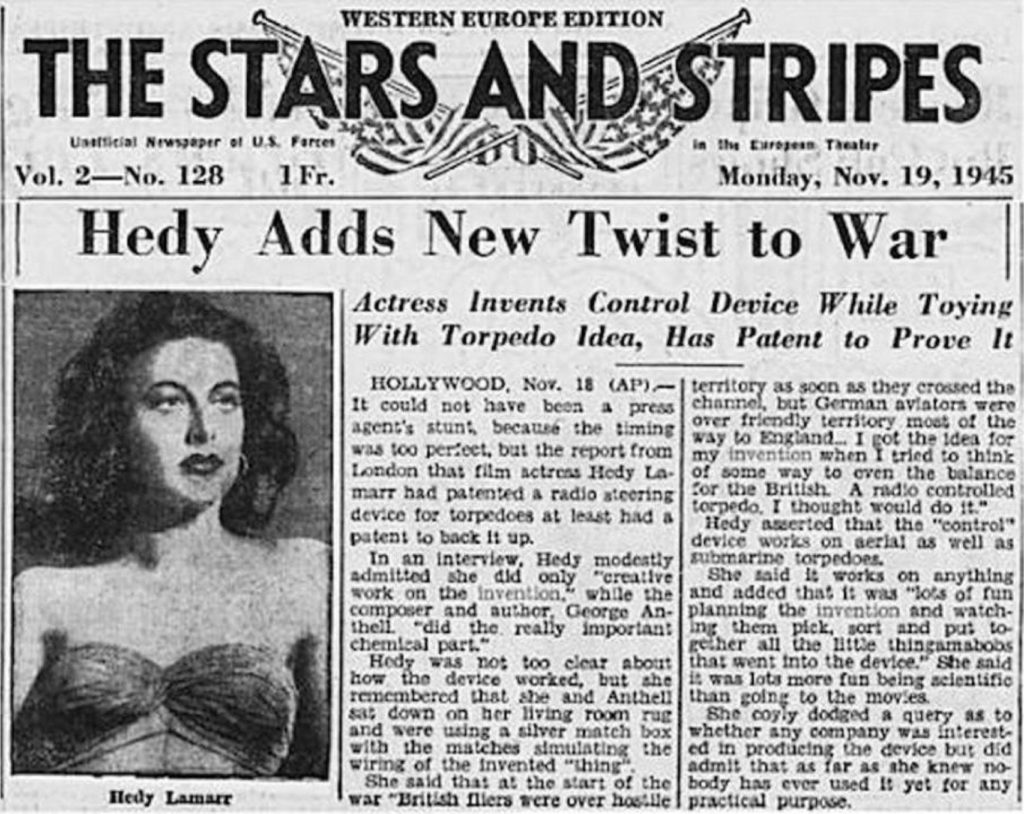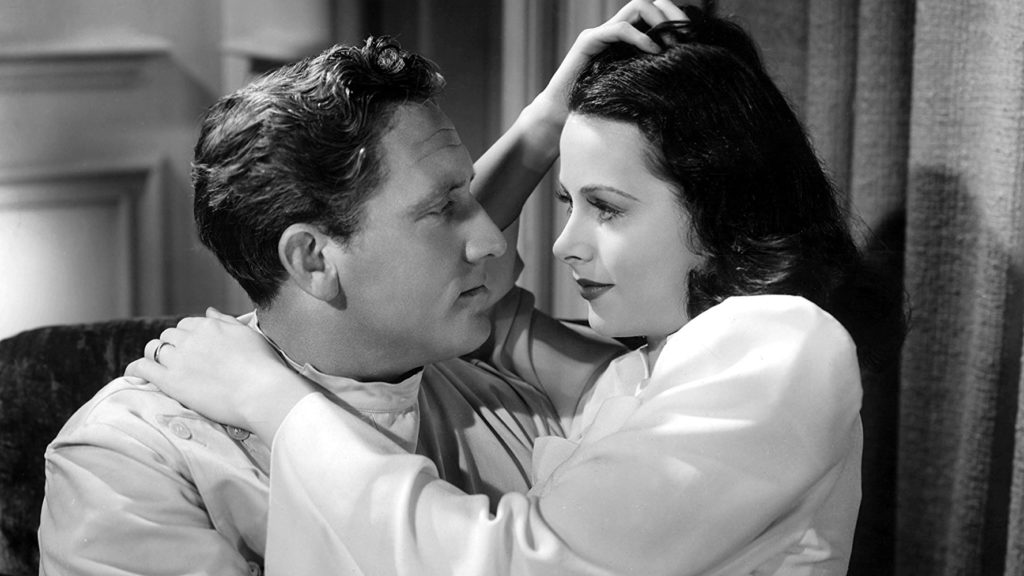New Documentary Tracks the Life of the Screen Queen and Tech Genius
DIRECTED BY ALEXANDRA DEAN/2017
STREET DATE: APRIL 24, 2018/ZEITGEIST FILMS
 “Frequency hopping.” That’s the term anyone should know when it comes to the late Hedy Lamarr. Not only is “frequency hopping” the revolutionary basis for her wartime invention intended to allow enemy radar to be eluded during World War II, it also describes the woman herself. Movie star, immigrant, brilliant inventor, trendsetter. Wife of a revolving door of husbands, mother of pushed-aside children. Top celebrity, glamour queen, persona-non-grata, sex symbol, feminist, strange recluse. Enigmatic. Marginalized. Unrecognized. Unrecognizable. Unmistakable. Bombshell.
“Frequency hopping.” That’s the term anyone should know when it comes to the late Hedy Lamarr. Not only is “frequency hopping” the revolutionary basis for her wartime invention intended to allow enemy radar to be eluded during World War II, it also describes the woman herself. Movie star, immigrant, brilliant inventor, trendsetter. Wife of a revolving door of husbands, mother of pushed-aside children. Top celebrity, glamour queen, persona-non-grata, sex symbol, feminist, strange recluse. Enigmatic. Marginalized. Unrecognized. Unrecognizable. Unmistakable. Bombshell.
At various points in her long life, Hedy Lamarr was all these things, and more. So goes the tale of her life as spelled out in the new feature length documentary film by Alexandra Dean, Bombshell: The Hedy Lamarr Story. Lovingly and meticulously crafted, Bombshell delivers the goods and then some when it comes to the legend and truth of this one-time screen icon.
Dean’s assembly is spot-on; an accomplished presentation of carefully curated clips and vintage material alongside her newer interviews with experts, friends and family members.
In the 1930s, we’re told, there was no bigger female star than Hedy Lamarr. Her beguiling look influenced and transcended movies. Other major actresses did their hair, their eyes, and their makeup like her. The DC Comics character Catwoman was modeled after her. She sold millions of dollars in war bonds. She entertained the troops, she kept Hollywood’s pulse rate up, she churned out film after film. And during all of that, she actively pursued her first passion: Technology. In the expansive downtime on set, Lamarr would disappear into her area to work on her frequency hopping invention. Listed prominently as a co-innovator on the patent, her invention would eventually go on to enable so much of the tech we rely upon today: WiFi, Bluetooth, GPS… the list goes on.

Yet, at the time, the U.S. military cast aside her pitch, urging her to instead get out there and use her sexy celeb status to bolster our fighting men, and sell some bonds. Which she did. But the wound must’ve festered- particularly in the early 1960s, when she learned that the U.S. was using her invention after all, behind her back. Pursuing getting paid, or even recognized for her work would, for her, be a dropped ball; her genius only now getting it’s due. The amount of money her frequency hopping innovation is estimated to be currently worth, revealed at the very end of Bombshell, is utterly staggering.
Bombshell makes the point that Lamarr, all the while, was no saint. Despite her great fame and wealth, her life was marked by many poor decisions, erratic behavior, and an off-the-rails personal life. Her earliest discussed work is the 1933 Czech film Ecstasy (Ekstase), in which Lamarr appeared nude and simulated an orgasm in what’s been called the first non-pornographic depiction of such on film. Ecstasy proved to be the shadow that she could not shake free of, even after she soon came to America and made her mark in Hollywood. This sexpot pigeonholing, coupled with the later outright refusal to acknowledge her invention, likely took a nasty toll on her psyche.

Seducing Spencer Tracy in one of their films together.
Alexandra Dean, the documentary’s director, points out in a brief interview that today, Lamarr is no longer remembered for her looks, but rather for her invention. While it’s true that Lamarr has since been recognized and properly credited for her frequency hopping breakthrough, to say she’s “remembered” today, sadly, seems to be a bit of a stretch. Though tremendously famous in her time, not even the catalogue-mining DVD explosion of the early 2000s, a time when seemingly every major star of yesteryear was being celebrated with a box set collection, saw fit to include her. Her biggest hit by quite some distance, Cecil B. DeMille’s 1949 Samson and Delilah, was a major, major success at the time, but has long since gone the way of most Hollywood Biblical epics of yore, relegated to the dim edges of Cultural Obscurities. Such is sadly the case with Lamarr herself.
With Bombshell: The Hedy Lamarr Story, Alexandra Dean makes a noble stride in correcting that. While not breaking any new ground in terms of the documentary form, Dean’s assembly is spot-on; an accomplished presentation of carefully curated clips and vintage material alongside her newer interviews with experts, friends and family members. (Including Peter Bogdanovich, Mel Brooks, and the late TCM host Robert Osborne). It’s all built around a recently rediscovered audio interview from the early 1970s in which Lamarr discusses her life and her invention. It is the only known instance her publicly talking about the latter.
The Blu-ray, put out by Kino Lorber, offers little in terms of bonus features, with only the short interview with Dean and three interview outtakes, each running less than two minutes. But the picture, sound and certain musical choices of Bombshell on Blu are as contemporary as any accomplished 2017 doc.
Bombshell may not play like a bombshell of information, but its aftershock will do much to refresh and frequency hop the perception of the ever beguiling Hedy Lamarr.


